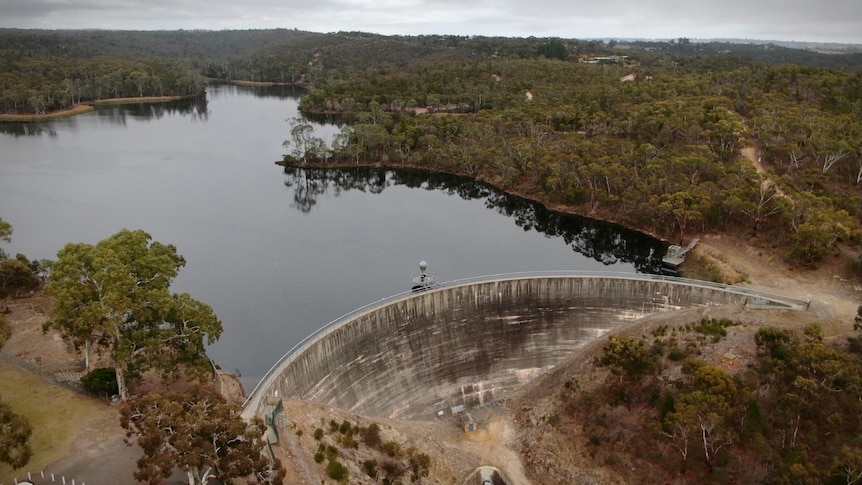Australia Weather News

The Barossa Reservoir north-east of Adelaide in 2021. (ABC News: Lincoln Rothall)
Dry conditions have left Adelaide reservoirs at their lowest levels in more than two decades, the environment department says.
The Annual Water Security Update 2025, tabled in SA's parliament on Tuesday, showed a lack of rainfall has resulted in the lowest amount of water inflows to Adelaide's reservoirs for around 40 years.
The total reservoir levels across metropolitan Adelaide are at 38 per cent compared to 50 per cent on the same day last year, SA Water data shows.
Environment Minister Susan Close said while the reservoirs were not expected to be "anywhere near 100 per cent" at the end of summer, it was important to continue pumping River Murray water in.
"So we can get through the year even with a dry winter, which may happen, it's not yet clear," she told ABC Radio Adelaide.
Ms Close said production at the Lonsdale desalination plant had been at "full capacity" since January in response to the historic lows.
"This year it appears at this stage that our drought has been experienced largely in the south of South Australia and ... just tipping into south-east Victoria," she said.
"The Murray itself is not in a drought situation, which means we can continue to pump our allocation into our reservoirs in order to withstand what's coming as well as being able to rely on the desal plant.
"So in that sense we are much better off than we were in the Millennium Drought."
Ms Close said without the desal plant, which has the capacity to produce 100 gigalitres of water per year, Adelaide residents may have hadto return to water restrictions.
But she said it would be hard to get "meaningful amounts of water" from restrictions "given how efficient we've all become".
The lack of rainfall has impacted other parts of the state, with dams and waterways drying up in the Adelaide Hills and Fleurieu Peninsula, leaving farmers and households who are not connected to mains water struggling.
Water carters faced "unprecedented" demand and the state government launched an emergency intervention to relieve off-grid households.
Ms Close said so far about 200 people had collected more than 1,000 litres on average across four potable bulk water collection points.
Flooding in the north
Ms Close said there was sufficient water accessible from the River Murray but did not think flows from floods in Queensland would reach Adelaide.
"We're having one of those strange experiences where the north of South Australia is preparing for flood experience and the south of South Australia is in pretty serious drought," she said.
"They've had some pretty serious rain up there.
"But it's very unusual to be able to link the northern [and] southern basins in a meaningful way to get water from that northern basin through into our southern basin."
The Bureau of Meteorology has issued a flood warning for inland rivers in the north-eastern part of the state.
Flood water is estimated to be above the level of the causeway at Innamincka after elevated river levels along the Cooper Creek this week.
Innamincka local Ali Matthews told ABC North and West "phenomenal amounts" of water have been flowing down.
"Every flood is different, it is sort of 'hurry up and wait' at this stage," he said.
Ms Close said she was concerned about the effect of global warming, with 2024 the hottest year on record.
"While locally, regionally, you can have different experiences of that and it doesn't feel like global warming every single day, you have to pay attention to those averages," she said.
"What we are having to look to in the slightly longer term is preparing for a scenario where we get through several droughts back-to-back and that's what we're working on with our water security planning."
ABC